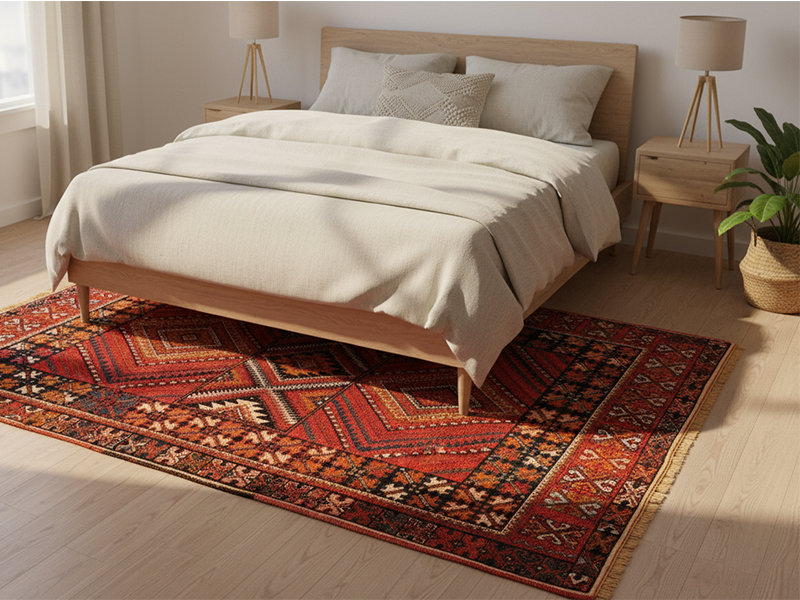How to Decorate Small Rooms
Why Small Room Decoration Matters
Small rooms often feel challenging to decorate. Limited space can create frustration, but with smart design choices, every corner can be optimized. The key is to blend style and functionality while avoiding clutter. Decorating a small room is not about sacrificing comfort. Instead, it’s about using creativity to transform the space into a cozy, stylish, and practical environment.
Choosing the Right Colors
Colors significantly influence how spacious a room feels. Light shades such as white, beige, and pastel tones make walls look broader. These shades reflect natural light and create an open, airy atmosphere. Darker colors, on the other hand, can make a room feel smaller. Still, they are effective as accent shades on a single wall or in decorative accessories.
A good balance is combining neutral walls with bold-colored pillows, rugs, or artwork. This contrast provides character while keeping the space visually open.

Lighting: The Secret to Spaciousness
Lighting is crucial when decorating small rooms. Natural light should always be maximized. Heavy curtains that block sunlight should be replaced with sheer fabrics or blinds that allow brightness to pass through.
Artificial lighting also plays a vital role. Multiple sources, such as floor lamps, wall sconces, and LED strips, create depth and eliminate dark corners. Using warm, dimmable lighting makes the room feel inviting and flexible for different moods.
Smart Furniture Choices
Furniture is often the biggest challenge in small rooms. Large, bulky pieces overwhelm the space. Instead, multifunctional furniture works best. Examples include sofa beds, ottomans with storage, foldable desks, and beds with built-in drawers.
These pieces serve multiple purposes without wasting space. Choosing furniture with slim legs or transparent materials, such as glass tables, also makes the room appear lighter.
Clever Layouts for More Openness
The way furniture is arranged impacts how spacious a room feels. Pushing large items against the wall creates open central space. Low furniture, like sideboards or open shelves, ensures that the ceiling height feels greater.
Avoid blocking pathways with furniture. Instead, aim for clean lines and functional arrangements. A small room should invite movement without feeling cramped.
Mirrors and Reflective Surfaces
Mirrors are among the best tricks to make small rooms feel bigger. When placed across from windows, mirrors reflect natural light, doubling the brightness. A large wall mirror creates the illusion of depth, making the space feel wider.
Reflective surfaces such as glass furniture, glossy cabinets, or metallic finishes also add brightness and prevent heaviness in the design.
Smart Storage Solutions
Storage is often the biggest problem in small rooms. The goal is to stay organized without overcrowding. Vertical storage, like wall-mounted shelves or tall cabinets, uses height efficiently. Under-bed drawers or hidden compartments in benches maximize every inch of space.
Hooks, hanging baskets, and floating shelves are excellent solutions to keep items accessible while saving floor space. Custom-made furniture can also fit awkward corners, providing unique storage opportunities.

Minimalist Decoration
Clutter is the enemy of small rooms. Too many decorative items make the area overwhelming. Instead, use minimal but meaningful accents. A few houseplants, small artwork, or decorative pillows add character without crowding the space.
Minimalism doesn’t mean the room should look empty. It means every item should have a purpose, whether practical or aesthetic.
Combining Style and Functionality
Small rooms should not only be practical but also stylish. Balancing function with design creates a welcoming environment. A cohesive color palette, thoughtful textures, and selected décor pieces ensure harmony.
Style should highlight the room’s personality. Whether you prefer modern minimalism, Scandinavian warmth, or bohemian charm, small rooms can reflect your taste when decorated intentionally.
Practical Tricks for Everyday Use
To make the most of small rooms, a few daily habits matter. Keeping surfaces clutter-free helps the space stay open. Regularly reorganizing ensures that unused items don’t pile up.
Folding furniture away after use or rearranging according to seasonal needs keeps the room flexible. Smart habits amplify the design choices and maintain comfort.
FAQ: How to Decorate Small Rooms
1. How can I make a small room look bigger?
You can make a small room appear bigger by using light colors, adding mirrors, maximizing natural light, and arranging furniture along the walls to keep the center open.
2. What type of furniture is best for small rooms?
Multifunctional furniture works best in small rooms. Options include sofa beds, foldable desks, ottomans with storage, and beds with built-in drawers.
3. Should I use dark colors in a small room?
Dark colors can make a room feel smaller, but they work well for accent walls or decorative elements. Always balance them with lighter tones.
4. How do I add storage without overcrowding a small room?
Use vertical storage like shelves, wall-mounted cabinets, or tall bookcases. Under-bed drawers and custom furniture also maximize space efficiently.
5. What lighting works best in small rooms?
Layered lighting is ideal. Combine natural light with artificial sources such as floor lamps, wall sconces, and LED strips to brighten dark corners.
editor's pick
latest video
news via inbox
Nulla turp dis cursus. Integer liberos euismod pretium faucibua

